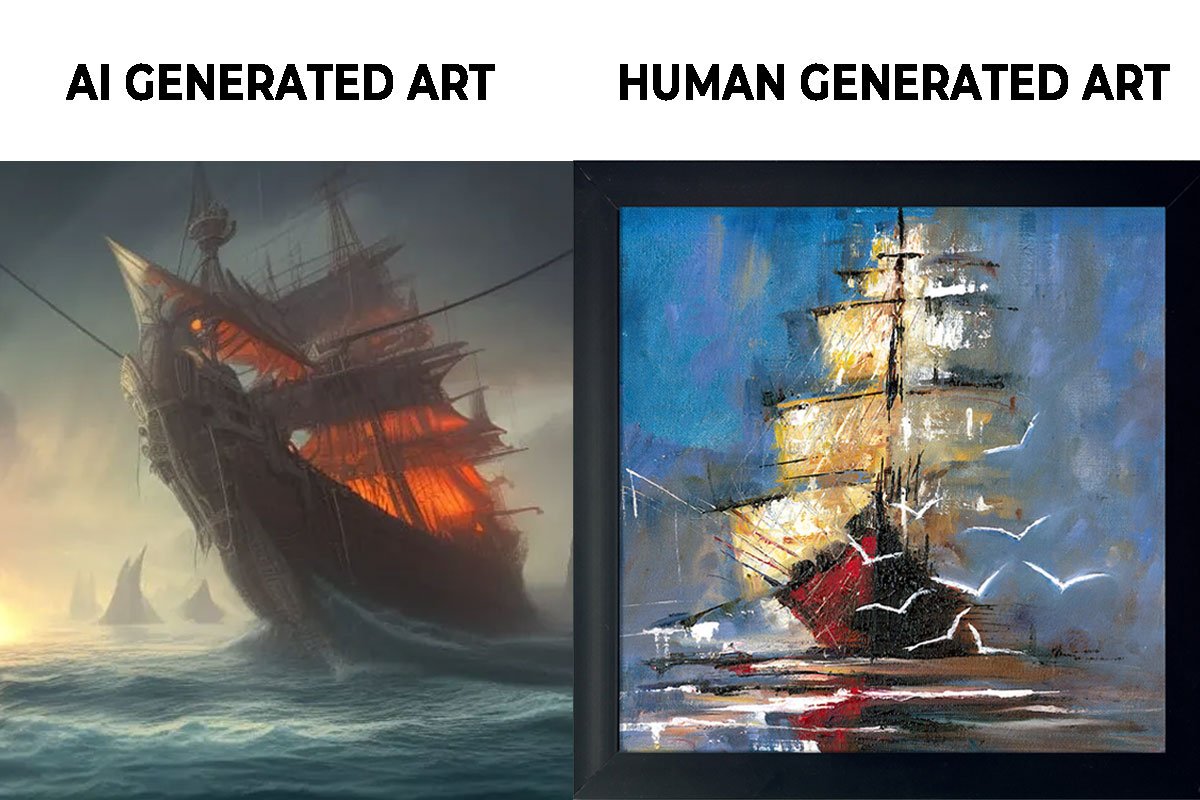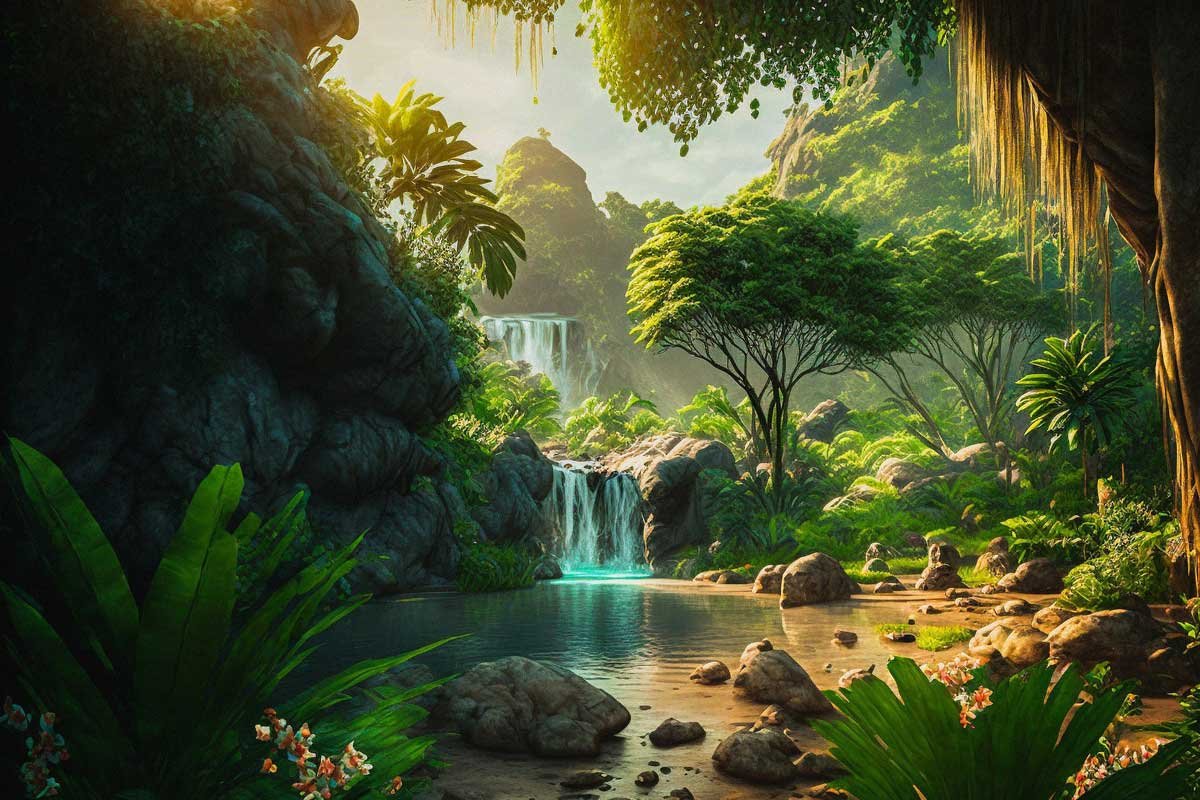Artificial intelligence is revolutionising many sectors, and the worlds of art are no exception. Artificial intelligence art refers to works of art that are built using machine learning algorithms and computer programs. A lot of controversy has been aroused by this art form, in which certain critics praise its ability to break the limits of traditional art while others argue that it’s a threat to creative expression and creativity. In this article, we will explore the pros and cons of AI art and discuss its impact on copyright, biases, and the future of human artists.
Pros of AI Art
The ability of artificial intelligence art to produce special and creative works which challenge conventional forms of art is one of its most significant advantages. New techniques, styles and forms of expression that could not have been achieved before now can be explored by artists through artificial intelligence. An enormous amount of data, e.g. images, videos and sounds, may be analysed by AI algorithms to develop a whole new generation of artistic forms.
Another advantage of AI art is its ability to produce art at a faster rate than human artists. With the help of AI, artists can create thousands of artworks in a matter of minutes, compared to the months or years it might take for a human artist to create the same amount of work. This can be especially useful in industries such as advertising and graphic design, where speed and efficiency are critical.
Cons of AI Art
One of the main criticisms of AI art is that it lacks the human touch and emotional depth that is essential in traditional art forms. Many argue that AI art is too sterile and lacks the imperfections and nuances that make art truly unique and expressive. Critics also argue that AI art lacks the ability to capture human experiences and emotions, which are central to many traditional art forms.
Another criticism of AI art is its potential to replace human artists and their jobs. As AI algorithms become more advanced and sophisticated, there is a risk that they could replace human artists in industries such as graphic design, advertising, and even fine art. This could have significant implications for the job market and the future of creative industries.
Copyright Issues with AI Art
One of the most significant legal issues surrounding AI art is the question of copyright ownership. Unlike traditional art forms, where the artist owns the copyright to their work, AI art is created by an algorithm that is programmed by a human. This raises questions about who owns the copyright to AI-generated artworks. Should the copyright belong to the person who programmed the algorithm, the company that owns the algorithm, or the AI itself?
There is no clear answer to this question, and it is likely to be the subject of legal disputes in the future. Some argue that copyright should be given to the person who programmed the algorithm, while others argue that it should belong to the AI itself. Until there is a legal precedent set, the question of AI art copyright ownership will remain a contentious issue.
Biases and AI Art
Another issue with AI art is the potential for biases in the algorithms used to generate the artwork. AI algorithms are only as unbiased as the data they are trained on. If the data contains biases or is limited in scope, then the resulting AI-generated artwork will also contain those biases. This has the potential to perpetuate existing social and cultural biases in art and limit the diversity of artistic expression.
The Impact of AI Art on Human Artists

Many people wonder if AI art will replace human artists altogether. While it is true that AI art has the potential to create large volumes of work quickly, it is unlikely that it will completely replace human artists. There will always be a need for human creativity and expression, and AI-generated artworks will never be able to replace the emotional depth and unique perspectives that come with human artistic expression.
However, AI art could have an impact on the way human artists create and distribute their work. Human artists may need to adapt to new technologies and find ways to integrate AI into their creative process. For example, some artists are using AI algorithms to generate sketches or mock-ups of their designs, which they then use as a starting point for their creative process.
Ethical Issues
Finally, there are ethical issues surrounding the use of AI in art. As with any new technology, there is a risk that AI art could be used to exploit or manipulate people. For example, AI algorithms could be used to generate targeted advertising or propaganda that is designed to manipulate people’s emotions and opinions. There is also a risk that AI art could be used to create fake or misleading images that are difficult to distinguish from real photographs.
To address these concerns, it is important for artists and designers to use AI in a responsible and ethical way. They should be transparent about how AI is used in their creative process and ensure that their algorithms are not perpetuating existing biases or stereotypes. Additionally, there should be clear regulations in place to prevent the misuse of AI-generated artwork for unethical purposes.
Solution
Certainly, historical data about the development of cameras and photo editing tools can provide insights into how AI art may impact the art world in the future.
When cameras were first invented, many traditional artists feared that photography would replace painting and drawing as the dominant art form. However, over time, photography and painting came to be seen as complementary mediums, with artists using photography as a tool for capturing images that they could then use as a starting point for their paintings.
Similarly, when photo editing tools were first developed, many traditional photographers feared that the ease of digital manipulation would undermine the integrity of photography as an art form. However, over time, photo editing tools have become widely accepted as a legitimate part of the creative process, with many photographers using them to enhance their images or create unique artistic effects.
In the same way, it is possible that AI-generated artworks will eventually be seen as a complementary medium to traditional art forms, rather than a replacement. Human artists may learn to integrate AI algorithms into their creative process, using them as a tool for generating ideas or exploring new artistic directions.
Overall, the historical data about the development of cameras and photo editing tools suggests that AI art may not be a threat to traditional art forms, but rather a new tool that artists can use to express themselves creatively.
Conclusion
Furthermore, it is important to note that AI-generated artworks are not inherently good or bad. Like any other artistic medium, the quality and value of an AI-generated artwork will depend on the skill and intention of the artist who created it. As such, it is important to judge AI-generated artworks based on their artistic merit, rather than simply dismissing them as soulless or lacking in emotion.
In conclusion, AI art is a new and exciting form of artistic expression that has the potential to push the boundaries of traditional art. However, it also raises important questions about copyright ownership, biases in AI algorithms, and the future of human artists. While AI-generated artworks will never be able to replace the emotional depth and unique perspectives of human artistic expression, they could have an impact on the way human artists create and distribute their work. It is important for artists and designers to use AI in a responsible and ethical way and for regulators to create clear guidelines to prevent the misuse of AI-generated artwork.


